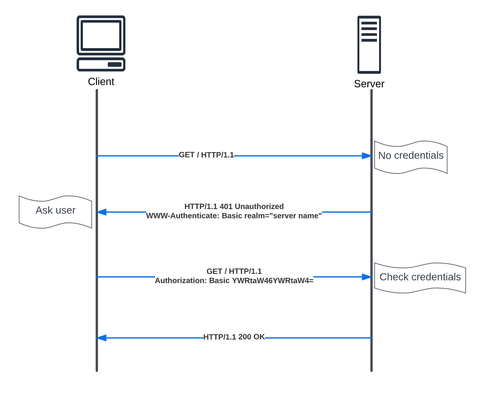access
31 TopicsF5 ASM/AWAF Preventing unauthorized users accessing admin path using iRule script
The below code uses the new BIG-IP variables " [ASM::is_authenticated] " and " [ASM::username] " and the code is simple enough as if you are authenticated but not admin then you will not get access to the url path " /about.php " and this is logged in the /var/log/asm logs because " log local3. ". At the end of the article I have shown how with APM you can accomplish AD group limit for specific urls but then the Authentication is moved on the APM while the AWAF iRule example the authentication is on the origin web server and the AWAF just handles the URL Authorization. when ASM_REQUEST_DONE { if { [ASM::is_authenticated] && [HTTP::path] equals "/about.php" } { log local3. "This request was sent by user [ASM::username]." if {[ASM::username] equals "admin"} { log local3. "The admin has logged!" return } else { drop } } } Github link: Nikoolayy1/F5_AWAF-ASM-ADMIN-Access: F5 BIG-IP iRule code for limiting users by to access urls! The harder part is that you need to do several prerequisites that I will explain here: Enable iRule support in the ASM policy. Configure a login page and optionally login enforcement (if " /about.php " is not blocked by the origin server to not be accessible before login this is a needed step!) Enable session tracking by login page Attach the irule Test and see Example logs: cat /var/log/asm ......... Jun 25 03:59:33 bigip1.com info tmm2[11400]: Rule /Common/f5-asm-allow-admin <ASM_REQUEST_DONE>: This request was sent by user admin. Jun 25 03:59:33 bigip1.com info tmm2[11400]: Rule /Common/f5-asm-allow-admin <ASM_REQUEST_DONE>: The admin has logged! [root@bigip1:Active:Standalone] config # The DVWA app was used for this demo that is old but gold and there are many F5 demos how to configure login enforcement for it! Here is a youtube video for assistance: BIG-IP AWAF Demo 32 - Use Login Page Enforcement with F5 BIG-IP Adv WAF (formerly ASM) Extra links (there is also a new event "ASM_RESPONSE_LOGIN"): ASM::username ASM::is_authenticated https://clouddocs.f5.com/api/irules/ASM.html AD group url enforcement: If you want to control access to URLs based on AD groups I suggest seeing the F5 APM/Acess module that will take of the authentication and with Layer 7 ACL each AD group could be limited what it has access to. APM and AWAF can work together as with layered virtual server AWAF can be before the APM as by default is after it and then to get the username you need to use the login page feature and not "Use APM username and Session ID" feature in the AWAF policy. Configuring Access Control Lists https://my.f5.com/manage/s/article/K00363504 https://my.f5.com/manage/s/article/K03113285 https://my.f5.com/manage/s/article/K54217479 Example APM profile of type LTM+APM and the APM policy for anyone interested where the APM uses AD to authenticate the users and query for group data and the members for of the guest group have an ACL assigned that limits their access 😜 Summary: This probably will be seen as well in F5 NEXT with many more cool features !204Views0likes0CommentsAPM SOO to webpage witn windows credentrial
Good afternoon First of all, I would like to inform you that I have very little experience with APM. I have been asked to do the following: We have a web magazine that is accessible from the intranet and from the Internet. Our objective is: To use SSO for the users who access this website from within the intranet or from the VPN will never have to enter their username and password, because SSO will be done with the credentials they used to log in to Windows. But users who access from the Internet will have to enter their username and password My biggest question right now is how can I send the user that was used to loginin Windows to F5? And then do the SSO. Thnaks42Views0likes1CommentBIG-IP APM Machine Cert Auth poblem
Dear F5 Expert Now i have implementation BIG-IP APM SSL VPN Auth with AD and Machine Cert Auth, For AD auth is work fine. But for Machine Cert Auth i found debug log is found Cert and verify key success. But i don't know why APM didn't forward client to authen page. Here's my configure SSL Self sign with ZERO SSL my SSL profile root domain and chain to ZERO SSL APM VPE i just verifu machine cert and allow 2 option verify key and not verify, i just check SN cert only. here's CA profile, i just use CA Cert from ZERO SSL and the last one here's Log on utility and access report Info 2024-03-03 16:23:18:016 \CertCheckImpl.cpp, CCertCheckImpl::Verify, Store name:"MY", Store location:"LocalMachine", Subject match FQDN:"false", Allow elevation UI:"true", Serial number(HEX):"00898ad22f5f67b4c15e15187d63d0592a", Issuer:"", SubjectAltName:"" Info 2024-03-03 16:23:18:016 \CertCheckImpl.cpp, CCertCheckImpl::Verify, certInfo:STORE_NAME:MY&STORE_LOCATION:LocalMachine&ALLOW_ELEVATION:1&MATCH_FQDN:0&SN:00898ad22f5f67b4c15e15187d63d0592a&ISSUER:&SAN:, RootCertInfo:IS_TRUSTED:0, Nonce: cWQ2NDNQZHpDbzdKNnRvbWN5SW8= Info 2024-03-03 16:23:18:017 \certinfo.cpp, CCertInfo::FindCertificateInStoreExt:, Total certs tested: 1 Info 2024-03-03 16:23:18:017 \certinfo.cpp, CCertInfo::FindCertificateInStoreExt:, Found matched certificate Info 2024-03-03 16:23:18:023 \certinfo.cpp, CCertInfo::IsPrivateKeyPresent, GetPrivateKey succeeded: found private key. Info 2024-03-03 16:23:18:023 \CertCheckImpl.cpp, CCertCheckImpl::CheckPrivateKey, The machine certificate has private key on this machine Info 2024-03-03 16:23:18:033 \CertCheckImpl.cpp, CCertCheckImpl::Verify, Found key successfully using current user Info 2024-03-03 16:23:18:033 \CertCheckImpl.cpp, CCertCheckImpl::CheckPrivateKey, Signing message succeeded Info 2024-03-03 16:23:18:066 CUAgentHost::downloadNextAgent() - sending request to server "https://www.kotchagorn.com:10443/my.policy_host?dummy=45b47b8aeb5c96285f65f295ffa35237" Info 2024-03-03 16:23:18:067 CUAgentHost::downloadNextAgent() - POST data "version=2.0&client_data=c2Vzc2lvbj0xMzJhNWY3YzhlYzgxODg5MmNiNjJhZmQ4M2MzYjFjYyZkZXZpY2VfaW5mbz1QR0ZuWlc1MFgybHVabT Info 2024-03-03 16:23:18:166 <URL>/logon</URL> Info 2024-03-03 16:23:18:170 EPCHECK \f5/EPCheck/MultiInstancePolicy.h, f5::EPCheck::MultiInstancePolicy<class EventSink>::stop, waiting for worker thread to exit Info 2024-03-03 16:23:19:534 EPCHECK \f5/EPCheck/MultiInstancePolicy.h, f5::EPCheck::MultiInstancePolicy<class EventSink>::run, worker thread exit Info 2024-03-03 16:23:19:536 EPCHECK \f5/EPCheck/MultiInstancePolicy.h, f5::EPCheck::MultiInstancePolicy<class EventSink>::stop, worker thread exit Info 2024-03-03 16:23:19:545 CUAgentHost::~CUAgentHost() - enter Info 2024-03-03 16:23:19:545 CAtlBrCon()::~CAtlBrCon() Info 2024-03-03 16:23:19:545 CUAgentHost::~CUAgentHost() - exit Info 2024-03-03 16:23:19:547 EPCHECK wWinMain, Endpoint check server process finished (res), 0 2024-03-03 23:23:18 /Common/Kotchagorn_vpn:Common:83c3b1cc: Session variable 'session.check_machinecert./Common/Kotchagorn_vpn_act_machinecert_auth_ag.certificate_revoked' set to '0' 2024-03-03 23:23:18 /Common/Kotchagorn_vpn:Common:83c3b1cc: Session variable 'session.check_machinecert./Common/Kotchagorn_vpn_act_machinecert_auth_ag.certificate_verified' set to '0' 2024-03-03 23:23:18 /Common/Kotchagorn_vpn:Common:83c3b1cc: Session variable 'session.check_machinecert./Common/Kotchagorn_vpn_act_machinecert_auth_ag.error_message' set to ' X509_verify_cert failed: error #: 20 at depth 0, error message:unable to get local issuer certificate ' 2024-03-03 23:23:18 /Common/Kotchagorn_vpn:Common:83c3b1cc: Session variable 'session.check_machinecert./Common/Kotchagorn_vpn_act_machinecert_auth_ag.result' set to '0' 2024-03-03 23:23:18 /Common/Kotchagorn_vpn:Common:83c3b1cc: Session variable 'session.check_machinecert./Common/Kotchagorn_vpn_act_machinecert_auth_ag.signature_verified' set to '1' 2024-03-03 23:23:18 /Common/Kotchagorn_vpn:Common:83c3b1cc: Session variable 'session.check_machinecert.last.certificate_revoked' set to '0' 2024-03-03 23:23:18 /Common/Kotchagorn_vpn:Common:83c3b1cc: Session variable 'session.check_machinecert.last.certificate_verified' set to '0' 2024-03-03 23:23:18 /Common/Kotchagorn_vpn:Common:83c3b1cc: Session variable 'session.check_machinecert.last.error_message' set to ' X509_verify_cert failed: error #: 20 at depth 0, error message:unable to get local issuer certificate ' 2024-03-03 23:23:18 /Common/Kotchagorn_vpn:Common:83c3b1cc: Session variable 'session.check_machinecert.last.result' set to '0' 2024-03-03 23:23:18 /Common/Kotchagorn_vpn:Common:83c3b1cc: Session variable 'session.check_machinecert.last.signature_verified' set to '1' 2024-03-03 23:23:18 /Common/Kotchagorn_vpn:Common:83c3b1cc: Session variable 'session.policy.inspectionhost.status' set to 'done' Anyone please guide me please Best Regards,113Views0likes0CommentsBIG-IP Next Access presentation/demo
Hi everyone! Luke Lehman, BIG-IP Next Access product manager, will be joining us for a zoom presentation/demo on December 12th at 9am pacific standard time. Come see what's brewing for APM! If you have any questions before the session, drop them below. Zoom Session Link Oh...and we just might have an ugly sweater or two to give away to attendees!622Views3likes6CommentsApplication Programming Interface (API) Authentication types simplified
API is a critical part of most of our modern applications. In this article we will walkthrough the different authentication types, to help us in the future articles covering NGINX API Connectivity Manager authentication and NGINX Single Sign-on.4.2KViews5likes0CommentsLoad webtop from F5 Access edge client
I have an access profile set up for iOS devices to create a VPN connection via the F5 Access edge client. The network portion is working great. What I am struggling with is trying to present a set of bookmarks via webtop to frequently accessed resources people are accustomed to seeing (migrating from Pulse Secure). I have not found a way to display those bookmarks in the F5 Access client like Pulse Secure does. The closest I have come is a redirect either in the client (portal webtop) or Safari (via network access app launcher) to our portal page. Problem is, that requires them to login again since it is another session. I'm extremely new to all of this, so I'll keep poking around, just wanted to see if there were any suggestions from the community. Thanks!491Views0likes1CommentCan I Capture Outlook Login Details With no Login Page in APM?
I'm working with a customer that wants to use APM to handle some more granular access to their Exchange 2016 servers that are being load balanced by LTM. Is there a way I can create an access policy that can determine the user or UID of a user when they attempt to connect to exchange through Outlook? They want to make it so certain users do not have access to Exchange based on their IP and an AD attribute. If i were just IP it would be easy enough. I can't figure out how to capture any username information without having a login page. Any ideas?342Views0likes0Commentslimit IP access to certain URIs
Hi, I am looking for help creating an IRULE for the following conditions: Allow access to two URIs within the policy to a specific group of IPs. Disallow access to these URIs to all other IPs. I tried creating a traffic policy for this but was unsuccessful. Thanks Vered543Views0likes4Commentslimit IP access to certain URIs
Hi, I am looking for help creating an IRULE for the following conditions: Allow access to two URIs within the policy to a specific group of IPs. Disallow access to these URIs to all other IPs. I tried creating a traffic policy for this but was unsuccessful. Thanks Vered368Views0likes1CommentAPM Cannot Access Sesssion Variable Created by Irule
Hello, I am trying to pass the uri from an irule to the APM via a session variable However, the APM cannot find the variable. Here is the statement to generate the session variable. ACCESS::session data set session.user.custom.uri [HTTP::uri] I can see the variable in the console in Access ›› Overview : Active Sessions. dbe31cda.session.user.custom.uri I can also see it with the session dump command: sessiondump --sid=dbe31cda | grep custom.uri dbe31cda.session.user.custom.uri 18 /xxx/yyyy However, the APM cannot find the variable. variable "session.user.custom.uri" was not found in the local cache for session "dbe31cda" 'getSessionVar()': 594: try to get it from MEMCACHED variable "session.user.custom.uri" for session "dbe31cda" was not found in MEMCACHED Any ideas? Jeffrey759Views0likes4Comments




